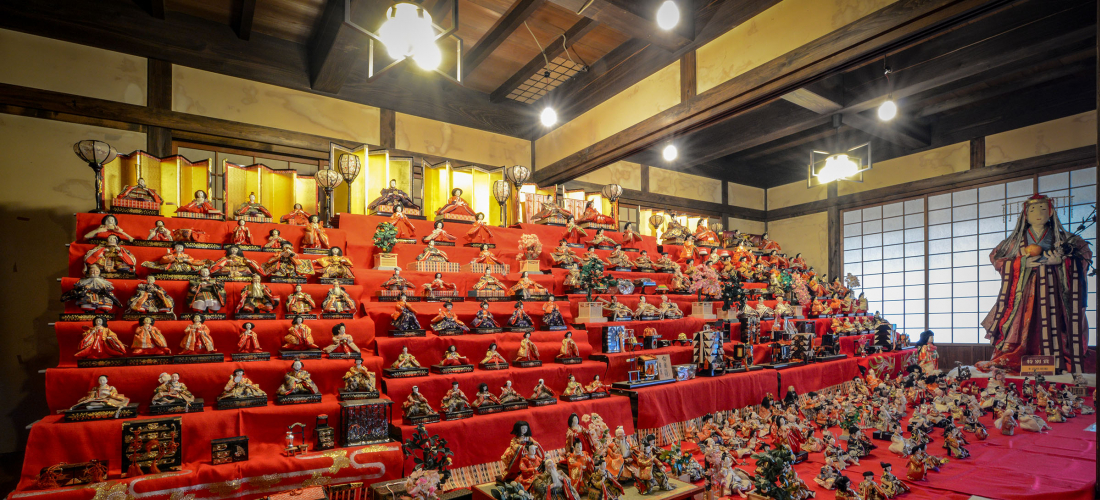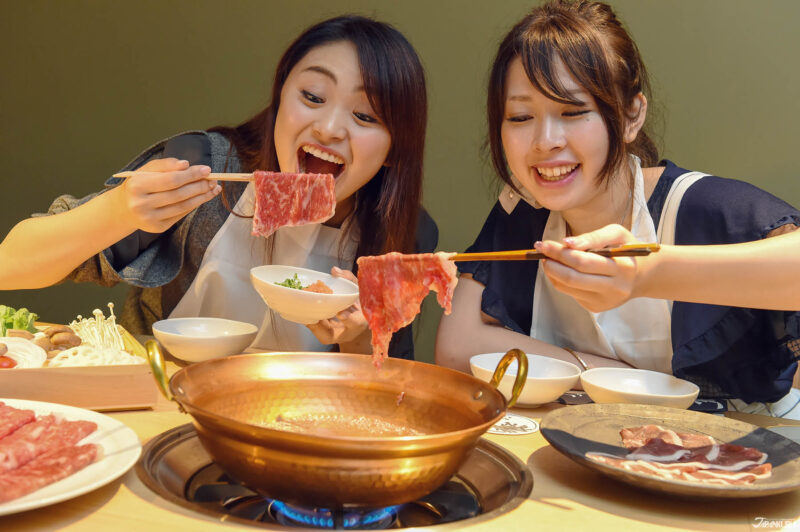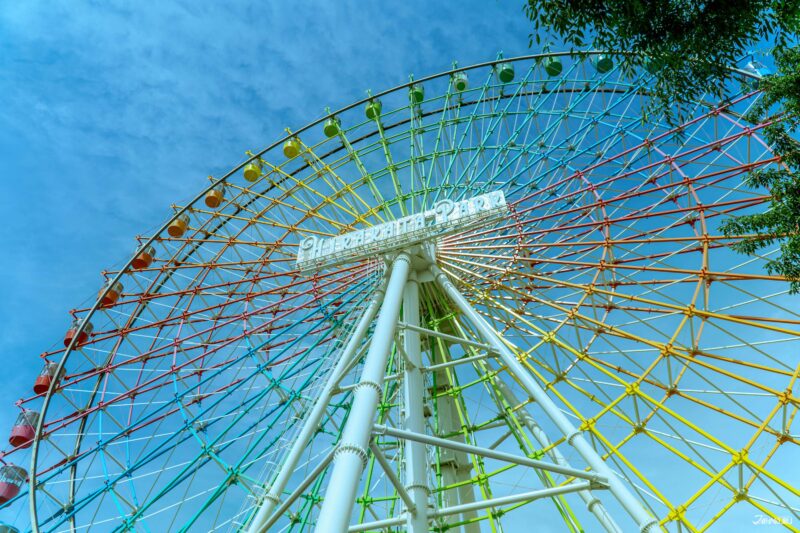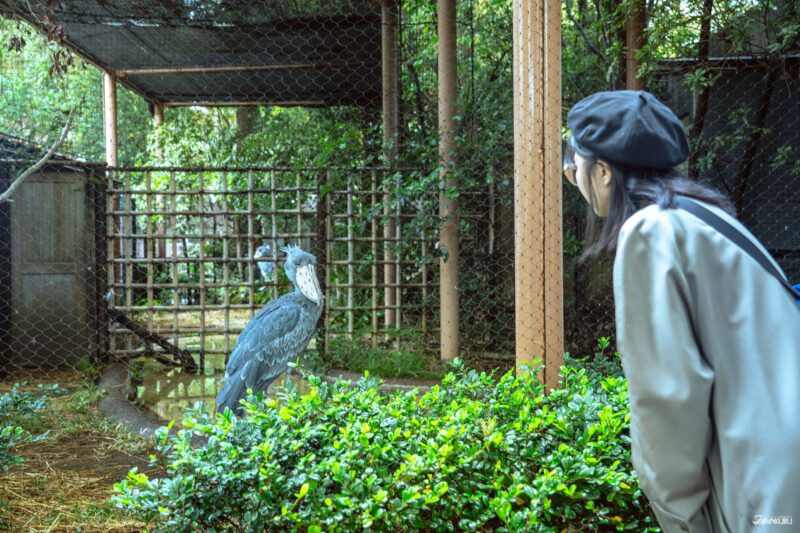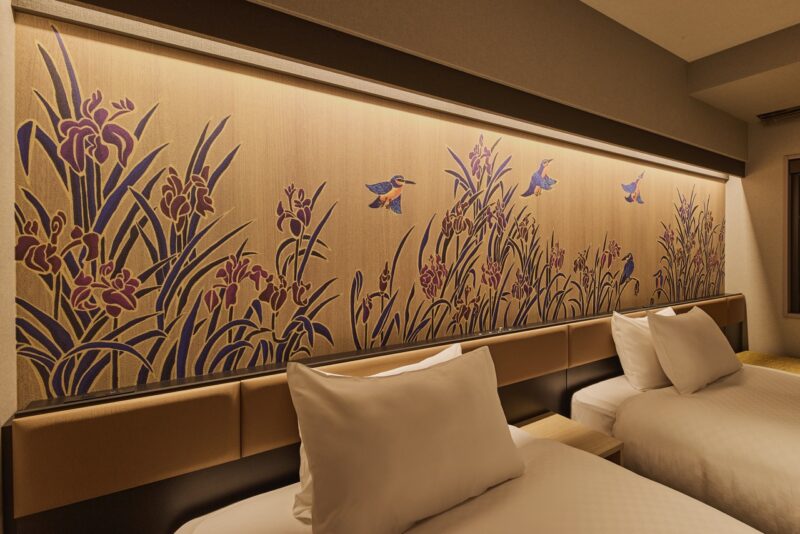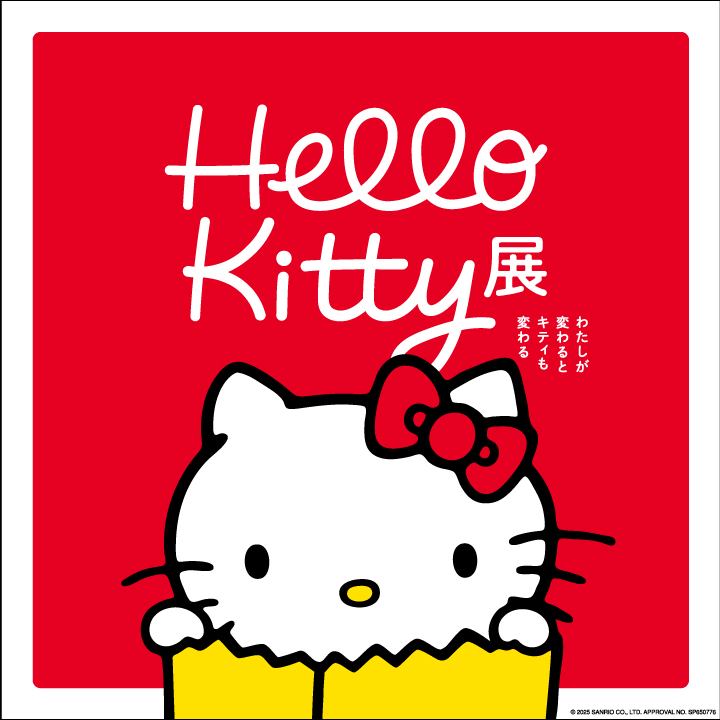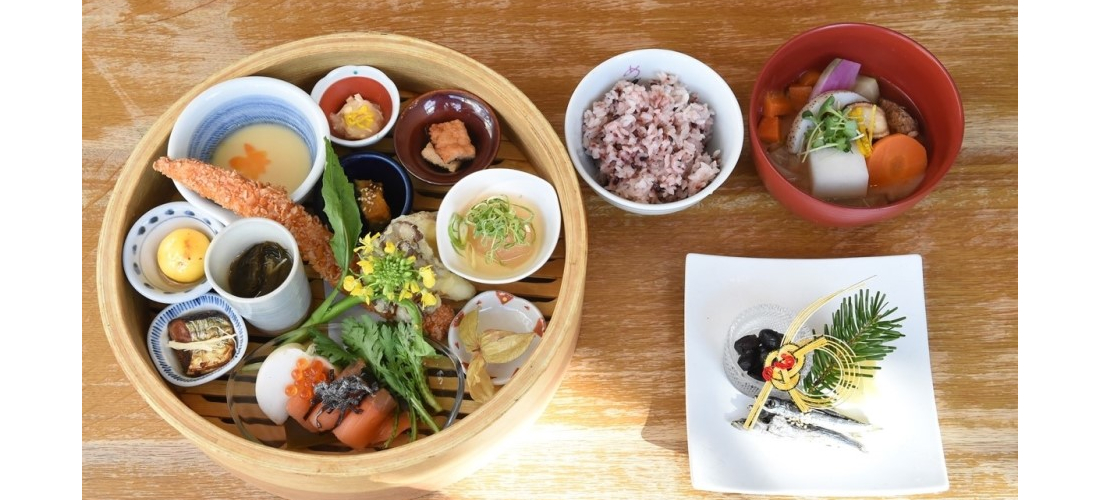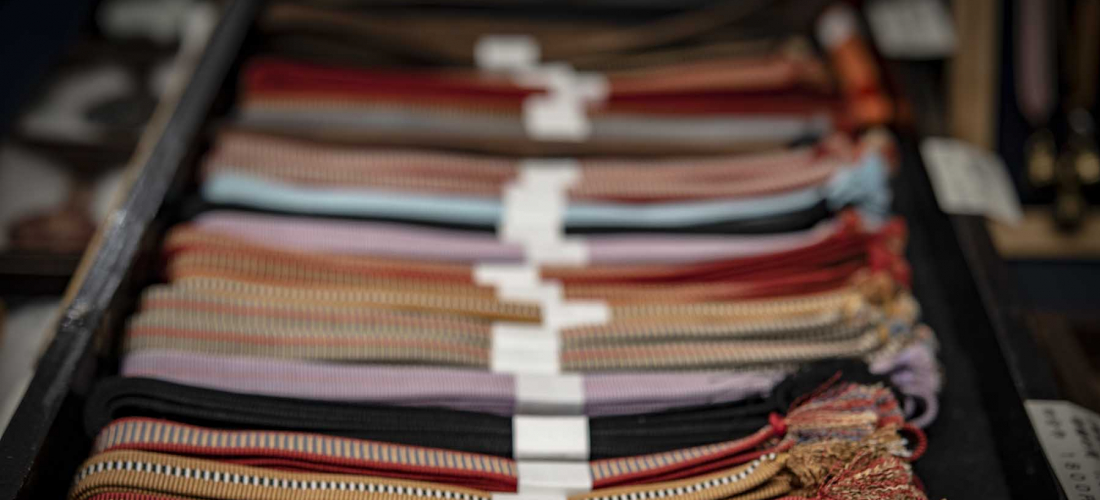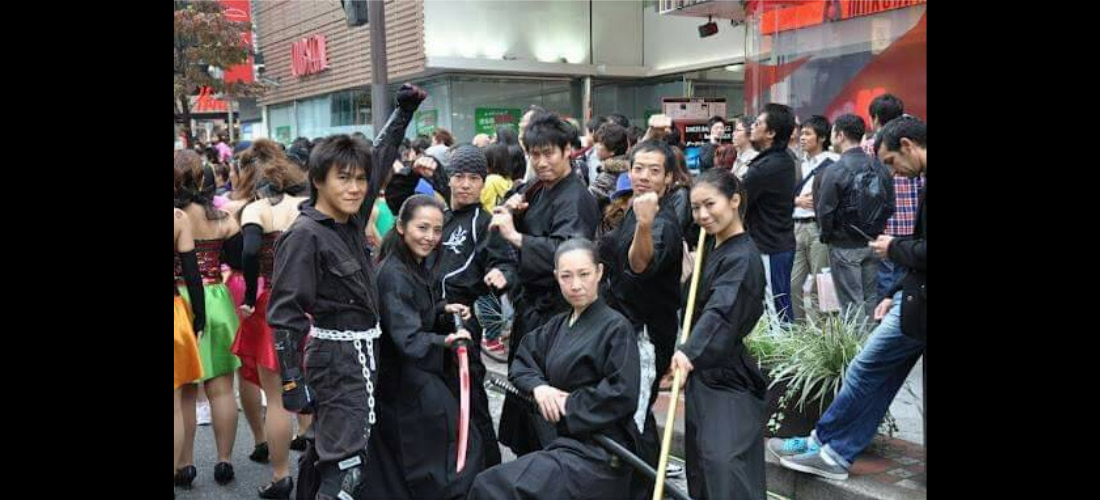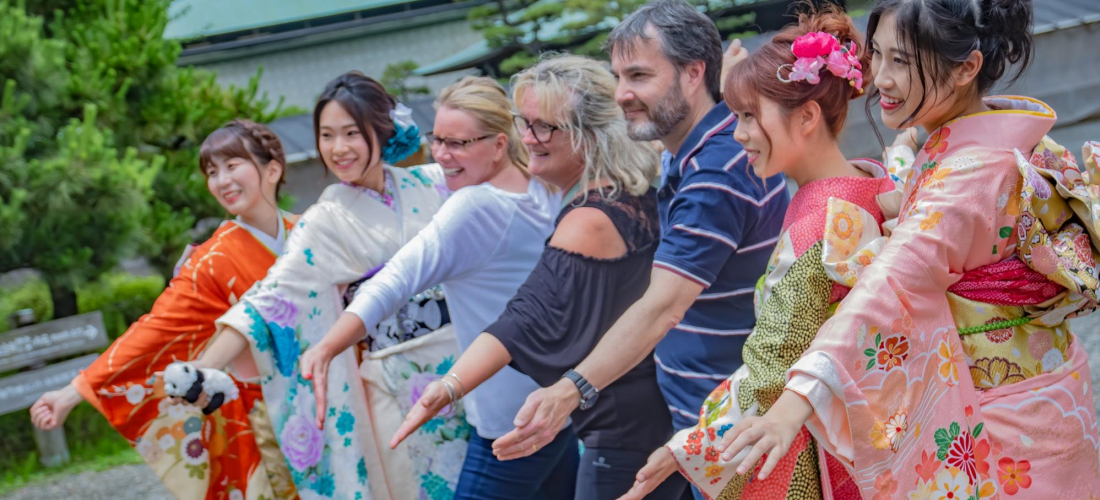CONTENTS
This Japanese festival is held every March to celebrate girls and admire some of Japan’s most beautiful dolls!
🎎 Japan’s Doll Festival 🎎
🌸 ひな祭り 🌸

Every year on March 3, families with daughters all over Japan celebrate a special day in Japanese culture, Hina Matsuri. The festival has many names, sometimes simply called the Hina Festival, and sometimes dubbed “Girl’s Day” or “Doll Festival.” On this special day, stunning Japanese hina dolls are set up in breathtaking displays to celebrate girls and to pray for their health and happiness.
🎎 The History Behind Japanese Hina Dolls 🎎
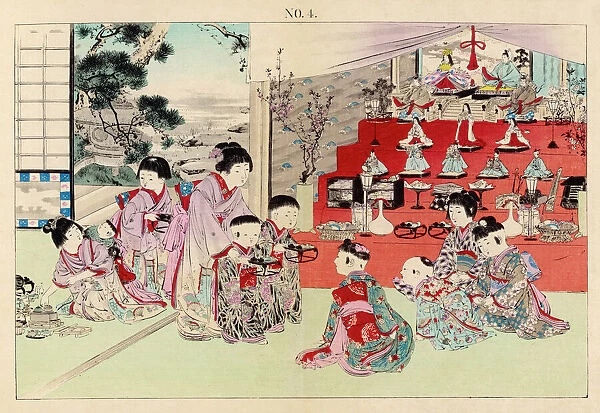
While the history and cultural traditions of Hina Matsuri began in the Heian period (794-1185), the displays of hina dolls that now make up the heart of festival celebrations were first erected in the early 1600, at the beginning of the Edo period (1603-1868). Although the stereotypes and horror tropes of the modern day have led many to find the dolls a bit eerie, these small figurines are traditionally believed to act as good luck charms, helping to ward off evil spirits. Initially, they were used to harness sins and misfortunes, which could be transferred to a doll before it was thrown into the sea, bad deeds disappearing under the waves. Some areas in Japan still continue this tradition, but many people now keep the dolls as treasured heirlooms, often purchased by elder relatives or handed down through generations.
You can see people preparing for Hina Matsuri as early as February, to give everyone plenty of time to enjoy the decadently decorated dolls, but the beautiful displays come down right after Hina Matsuri on March 3rd for superstitious reasons. If you put away the dolls too late, it’s said, all that work wishing for a girl’s health and happiness could go to waste – and (gasp) they might never find a husband!
🎎 The Hina Doll Tiered Platform 🎎
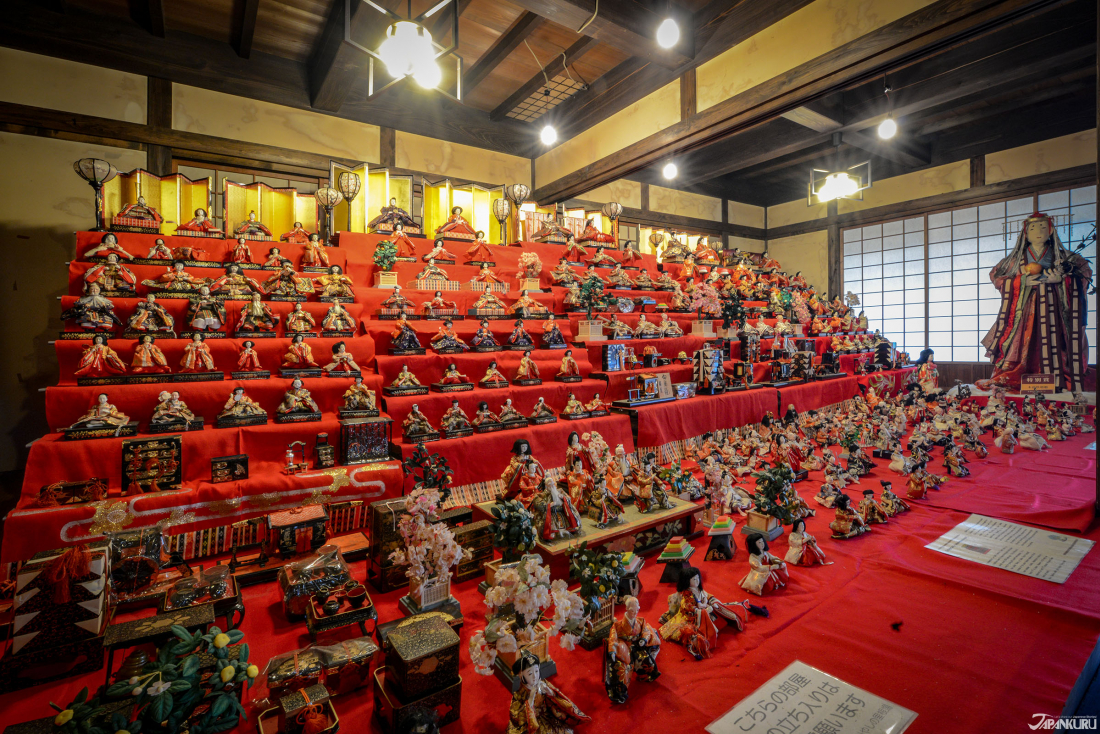
The tiered platform for the hina dolls is called a “hina dan” (ひな壇). They are normally built with five to seven tiers and covered with red felt, but the exact decorations found gracing each level can vary widely. Some homes prefer cute, simple displays, but others include small Japanese folding screens, realistic futon mattresses, lanterns, tea sets, and so much more. These displays can be heaven for anyone who loves dolls and miniatures.
What doesn’t usually change very much is the specific order that structures the hinadan, which is supposed to be a representation of a Heian period wedding. While there are slight differences depending on the region, the basic order has the bride and groom on the top tier – the “Odairi-sama” (御内裏様) holding a baton and the “Ohina-sama” (御雛様) holding her fan. These two lofty dolls are thought to represent members of the imperial family. Below them are the “san-nin kanjo” (三人官女, three court ladies), and on the third tier, the “gonin bayashi” (五人囃子, five musicians). Below these important roles come a whole host of ministers, bodyguards, servants, and sometimes many more unique characters. The total number of dolls can vary widely depending on the display, but the setting of a Heian wedding offers plenty to work with.
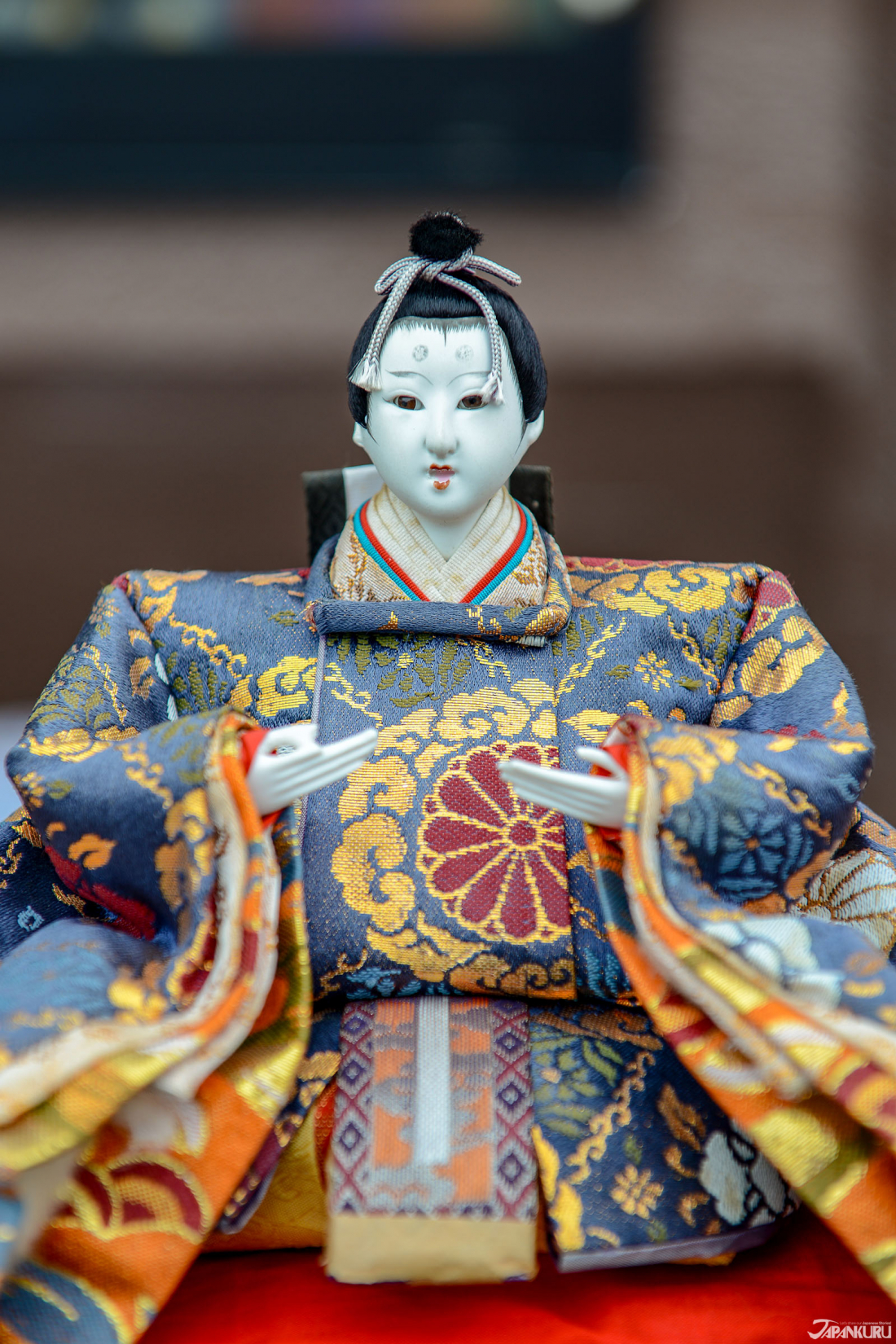
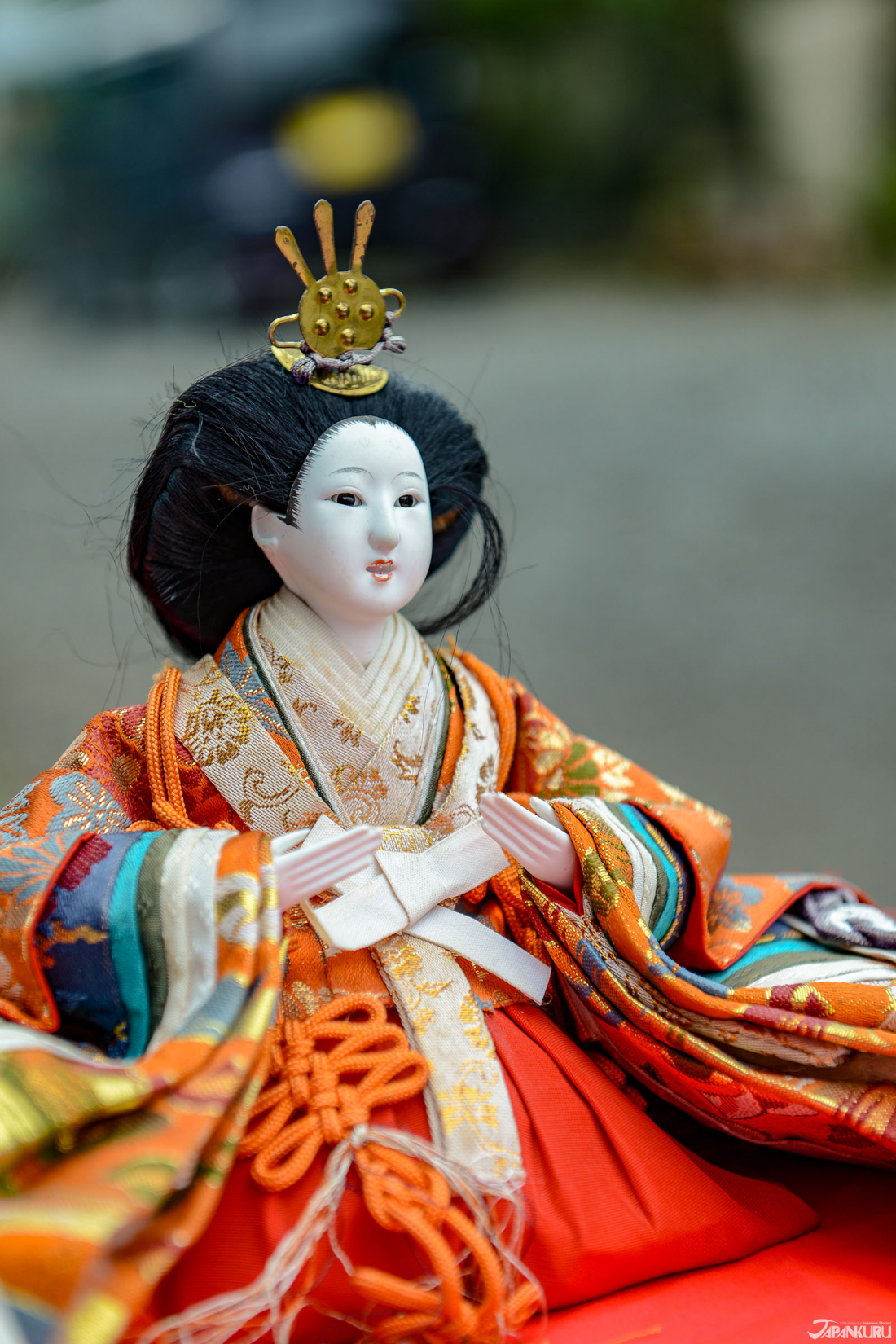
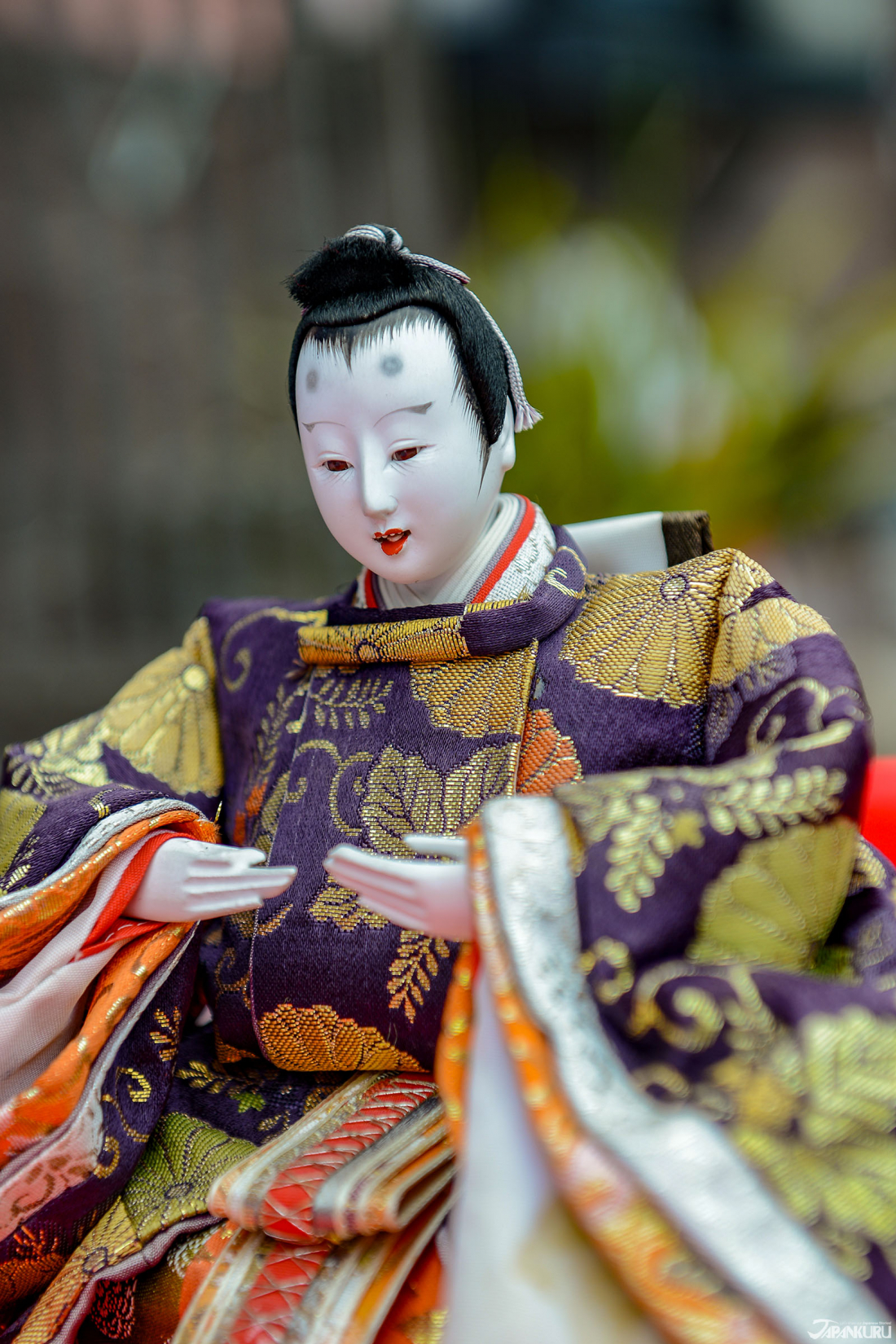
🎎 The Foods of Hina Matsuri 🎎
Chirashi Sushi (ちらし寿司)

Chirashi sushi (usually pronounced chirashi-zushi in Japan) is a dish of classic vinegared sushi rice topped with colorful seafood fish and vegetables, and while it’s available in restaurants year-round, it’s especially popular during Hina Matsuri – largely because it’s cute. The name “chirashi sushi” translates to “scattered fish,” and it’s an appropriate title for this busy dish packed with different colors and flavors. While many households have their own family chirashi sushi recipe, adding shrimp is a common tradition specifically for festival renditions of the dish, as shrimp are thought to symbolize long life. May we all live until our backs become bent like a shrimp.
Hina Arare (ひなあられ)
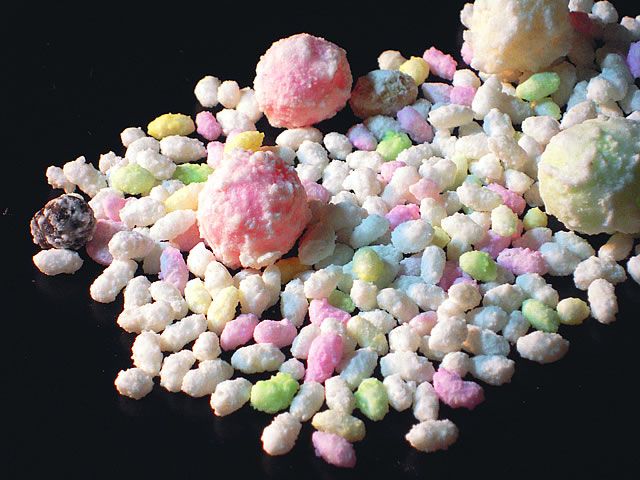
These puffed rice crackers are colored in the traditional Hina Matsuri hues of pink, green, yellow, and white. Each color represents something different: the white is like fresh snow, the green is like verdant tree buds, and the pink expresses life, as seen in the rosy cheeks of all the girls celebrating this holiday! These fun wagashi sweets come in either round balls or longer oval shapes, and both shapes are commonly served during festival celebrations.
Shirozake (白酒)
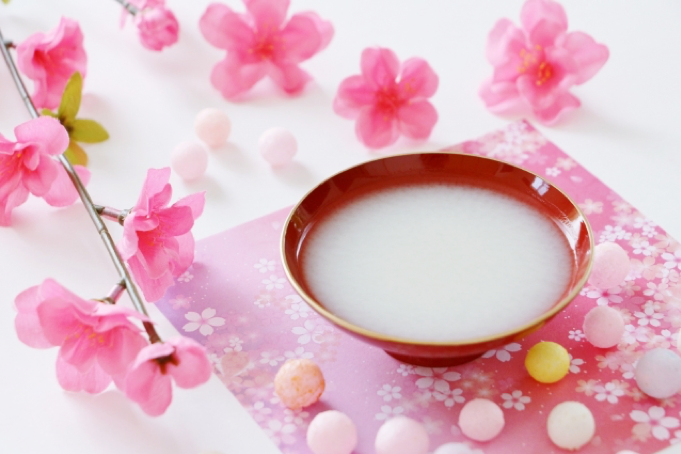
Shirozake (literally “white sake”) is a sweet, cloudy rice wine that is traditionally drunk during Hina Matsuri. It is similar to amazake (甘酒), which is a more common drink found around Japan, with a similar color and sweet flavor. Amazake, however, is usually non-alcoholic, whereas shirozake is somewhat alcoholic (usually about 8 or 9%). Shirozake is the traditional drink for the festival, but amazake is increasingly taking its place, since the significantly lower alcohol content allows children to enjoy it too!
🎎 Japan’s Best Hina Matsuri Events 🎎
Katsuura Big Hina Matsuri

The Katsuura Big Hina Matsuri in Chiba is considered the most famous Girls’ Day event in Japan with its some 30,000 displayed hina dolls in the city! Within the Katsuura there is a massive display of Hina Matsuri Dolls unlike anything we’ve ever seen before at Tomisaki Shrine. Earlier we said a normal tiered doll stand is from 5-7, however here at Tomisaki Shrine, there are 60 tiers and around 1800 dolls! It is simply beautiful. It is held yearly in late February to early March, so if you are in Tokyo around that time this is one festival you will not want to miss out on.

🎎Tomisaki Shrine
Google Maps
🚉Access
Tomisaki Shrine is just a short walk from Katsuura Station (勝浦駅) on the Sotobo Line (外房線).
It’s about a 2 1/2 hour train ride from Tokyo Station, and there are two different ways of getting there.
❶Take the JR Sobu Line Rapid (総武線快速) from Tokyo Station to Chiba Station (千葉駅) and change to the Sotobu Line to Katsuura Station.
❷Take the JR Keiyo Line Rapid (JR総武線快速) from Tokyo Station to Soga Station (蘇我駅) and change to the Sotobu Line to Katsuura Station.
💻Tomisaki Shrine HP (JPN)
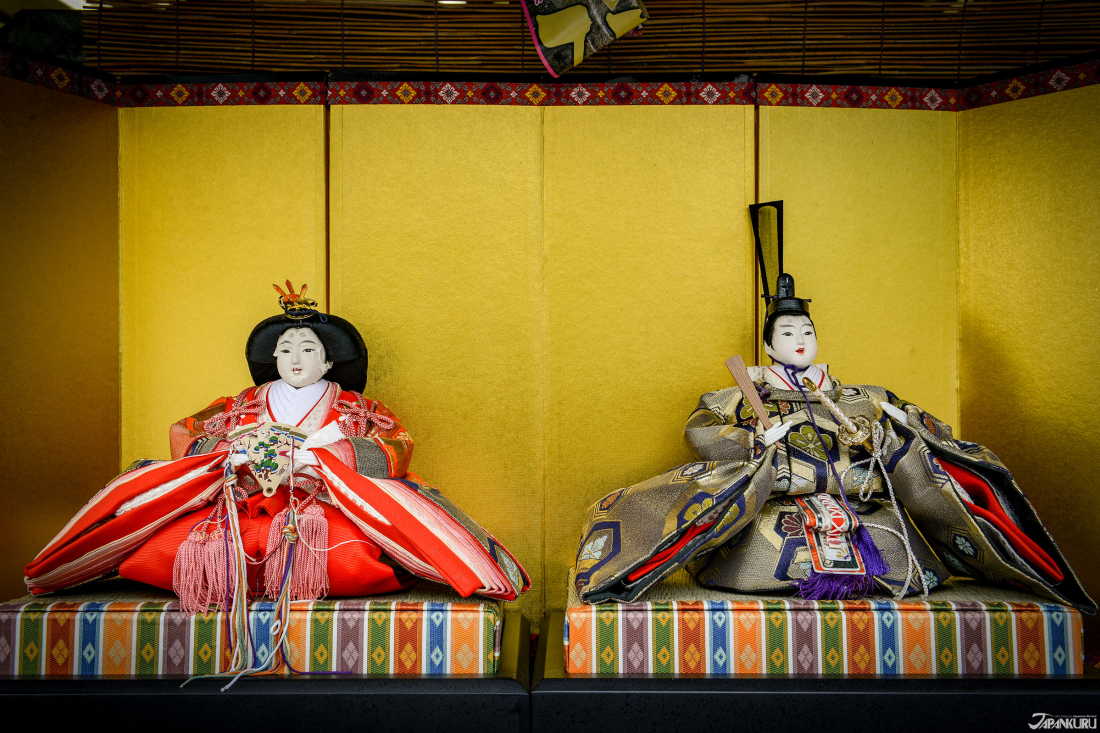
🎎 Japan’s Hina Matsuri, Doll Festival, Girls’ Day 🎎
Japan’s hina dolls are something that truly shows off the beauty of Japanese craftsmanship. The dolls are normally quite expensive, but we can see why one would want to keep such beautiful things in their houses. It’s a shame that they are only brought out for this specific occasion. One of these days we hope to get some of our own.
For more info and updates from Japan, check Japankuru for new articles, and don’t forget to follow us on X (Twitter), Instagram, and Facebook!
COMMENT
FEATURED MEDIA
VIEW MORE 
A New Tokyo Animal Destination: Relax & Learn About the World’s Animals in Japan
#pr #japankuru #anitouch #anitouchtokyodome #capybara #capybaracafe #animalcafe #tokyotrip #japantrip #카피바라 #애니터치 #아이와가볼만한곳 #도쿄여행 #가족여행 #東京旅遊 #東京親子景點 #日本動物互動體驗 #水豚泡澡 #東京巨蛋城 #เที่ยวญี่ปุ่น2025 #ที่เที่ยวครอบครัว #สวนสัตว์ในร่ม #TokyoDomeCity #anitouchtokyodome

Shohei Ohtani Collab Developed Products & Other Japanese Drugstore Recommendations From Kowa
#pr #japankuru
#kowa #syncronkowa #japanshopping #preworkout #postworkout #tokyoshopping #japantrip #일본쇼핑 #일본이온음료 #오타니 #오타니쇼헤이 #코와 #興和 #日本必買 #日本旅遊 #運動補充能量 #運動飲品 #ช้อปปิ้งญี่ปุ่น #เครื่องดื่มออกกำลังกาย #นักกีฬา #ผลิตภัณฑ์ญี่ปุ่น #อาหารเสริมญี่ปุ่น

도쿄 근교 당일치기 여행 추천! 작은 에도라 불리는 ‘가와고에’
세이부 ‘가와고에 패스(디지털)’ 하나면 편리하게 이동 + 가성비까지 완벽하게! 필름카메라 감성 가득한 레트로 거리 길거리 먹방부터 귀여움 끝판왕 핫플&포토 스폿까지 총집합!
Looking for day trips from Tokyo? Try Kawagoe, AKA Little Edo!
Use the SEIBU KAWAGOE PASS (Digital) for easy, affordable transportation!
Check out the historic streets of Kawagoe for some great street food and plenty of picturesque retro photo ops.
#pr #japankuru #도쿄근교여행 #가와고에 #가와고에패스 #세이부패스 #기모노체험 #가와고에여행 #도쿄여행코스 #도쿄근교당일치기 #세이부가와고에패스
#tokyotrip #kawagoe #tokyodaytrip #seibukawagoepass #kimono #japantrip

Hirakata Park, Osaka: Enjoy the Classic Japanese Theme Park Experience!
#pr #japankuru #hirakatapark #amusementpark #japantrip #osakatrip #familytrip #rollercoaster #retrôvibes #枚方公園 #大阪旅遊 #關西私房景點 #日本親子旅行 #日本遊樂園 #木造雲霄飛車 #히라카타파크 #สวนสนุกฮิราคาตะพาร์ค

🍵Love Matcha? Upgrade Your Matcha Experience With Tsujiri!
・160년 전통 일본 말차 브랜드 츠지리에서 말차 덕후들이 픽한 인기템만 골라봤어요
・抹茶控的天堂!甜點、餅乾、飲品一次滿足,連伴手禮都幫你列好清單了
・ส่องมัทฉะสุดฮิต พร้อมพาเที่ยวร้านดังในอุจิ เกียวโต
#pr #japankuru #matcha #matchalover #uji #kyoto #japantrip #ujimatcha #matchalatte #matchasweets #tsujiri #말차 #말차덕후 #츠지리 #교토여행 #말차라떼 #辻利抹茶 #抹茶控 #日本抹茶 #宇治 #宇治抹茶 #日本伴手禮 #抹茶拿鐵 #抹茶甜點 #มัทฉะ #ของฝากญี่ปุ่น #ชาเขียวญี่ปุ่น #ซึจิริ #เกียวโต

・What Is Nenaito? And How Does This Sleep Care Supplement Work?
・你的睡眠保健品——認識「睡眠茶氨酸錠」
・수면 케어 서플리먼트 ‘네나이토’란?
・ผลิตภัณฑ์เสริมอาหารดูแลการนอน “Nenaito(ネナイト)” คืออะไร?
#pr #japankuru #sleepcare #japanshopping #nenaito #sleepsupplement #asahi #睡眠茶氨酸錠 #睡眠保健 #朝日 #l茶胺酸 #日本藥妝 #日本必買 #일본쇼핑 #수면 #건강하자 #네나이토 #일본영양제 #อาหารเสริมญี่ปุ่น #ช้อปปิ้งญี่ปุ่น #ร้านขายยาญี่ปุ่น #ดูแลตัวเองก่อนนอน #อาซาฮิ

Japanese Drugstore Must-Buys! Essential Items from Hisamitsu® Pharmaceutical
#PR #japankuru #hisamitsu #salonpas #feitas #hisamitsupharmaceutical #japanshopping #tokyoshopping #traveltips #japanhaul #japantrip #japantravel

Whether you grew up with Dragon Ball or you just fell in love with Dragon Ball DAIMA, you'll like the newest JINS collab. Shop this limited-edition Dragon Ball accessory collection to find some of the best Dragon Ball merchandise in Japan!
>> Find out more at Japankuru.com! (link in bio)
#japankuru #dragonball #dragonballdaima #animecollab #japanshopping #jins #japaneseglasses #japantravel #animemerch #pr

This month, Japankuru teamed up with @official_korekoko to invite three influencers (originally from Thailand, China, and Taiwan) on a trip to Yokohama. Check out the article (in Chinese) on Japankuru.com for all of their travel tips and photography hints - and look forward to more cool collaborations coming soon!
【橫濱夜散策 x 教你怎麼拍出網美照 📸✨】
每次來日本玩,是不是都會先找旅日網紅的推薦清單?
這次,我們邀請擁有日本豐富旅遊經驗的🇹🇭泰國、🇨🇳中國、🇹🇼台灣網紅,帶你走進夜晚的橫濱!從玩樂路線到拍照技巧,教你怎麼拍出最美的夜景照。那些熟悉的景點,換個視角說不定會有新發現~快跟他們一起出發吧!
#japankuru #橫濱紅磚倉庫 #汽車道 #中華街 #yokohama #japankuru #橫濱紅磚倉庫 #汽車道 #中華街 #yokohama #yokohamaredbrickwarehouse #yokohamachinatown

If you’re a fan of Vivienne Westwood's Japanese designs, and you’re looking forward to shopping in Harajuku this summer, we’ve got important news for you. Vivienne Westwood RED LABEL Laforet Harajuku is now closed for renovations - but the grand reopening is scheduled for July!
>> Find out more at Japankuru.com! (link in bio)
#japankuru #viviennewestwood #harajuku #omotesando #viviennewestwoodredlabel #viviennewestwoodjapan #비비안웨스트우드 #오모테산도 #하라주쿠 #日本購物 #薇薇安魏斯伍德 #日本時尚 #原宿 #表參道 #japantrip #japanshopping #pr

Ready to see TeamLab in Kyoto!? At TeamLab Biovortex Kyoto, the collective is taking their acclaimed immersive art and bringing it to Japan's ancient capital. We can't wait to see it for ourselves this autumn!
>> Find out more at Japankuru.com! (link in bio)
#japankuru #teamlab #teamlabbiovortex #kyoto #kyototrip #japantravel #artnews
Photos courtesy of teamLab, Exhibition view of teamLab Biovortex Kyoto, 2025, Kyoto ® teamLab, courtesy Pace Gallery

Japanese Makeup Shopping • A Trip to Kamakura & Enoshima With Canmake’s Cool-Toned Summer Makeup
#pr #canmake #enoshima #enoden #에노시마 #캔메이크 #japanesemakeup #japanesecosmetics

⚔️The Robot Restaurant is gone, but the Samurai Restaurant is here to take its place. Check it out, and don't forget your coupon!
🍣신주쿠의 명소 로봇 레스토랑이 사무라이 레스토랑으로 부활! 절찬 쿠폰 발급중
💃18歲以上才能入場的歌舞秀,和你想的不一樣!拿好優惠券去看看~
#tokyo #shinjuku #samurairestaurant #robotrestaurant #tokyotrip #도쿄여행 #신주쿠 #사무라이레스토랑 #이색체험 #할인이벤트 #歌舞伎町 #東京景點 #武士餐廳 #日本表演 #日本文化體驗 #japankuru #japantrip #japantravel #japanlovers #japan_of_insta

Japanese appliance & electronics shopping with our KOJIMA x BicCamera coupon!
用JAPANKURU的KOJIMA x BicCamera優惠券買這些正好❤️
코지마 x 빅 카메라 쿠폰으로 일본 가전 제품 쇼핑하기
#pr #japankuru #japanshopping #kojima #biccamera #japaneseskincare #yaman #dji #osmopocket3 #skincaredevice #日本購物 #美容儀 #相機 #雅萌 #日本家電 #일본여행 #면세 #여행꿀팁 #일본쇼핑리스트 #쿠폰 #일본쇼핑 #일본브랜드 #할인 #코지마 #빅카메라 #japankurucoupon

